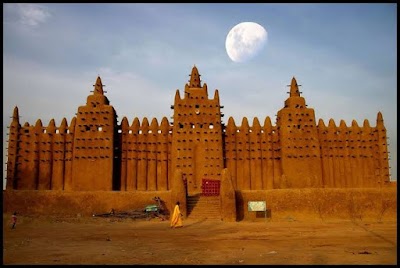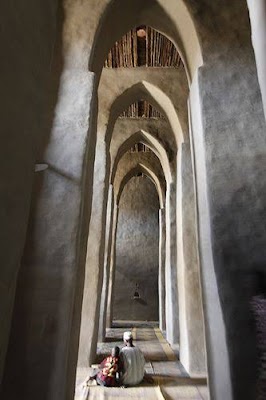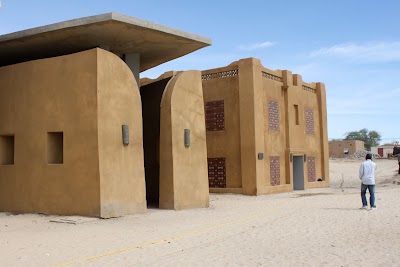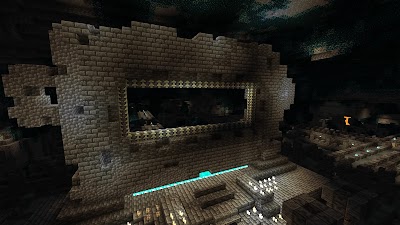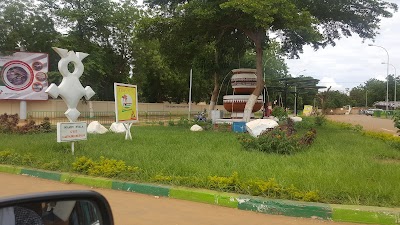Great Mosque of Djenné (مسجد جيني الكبير)
Overview
The Great Mosque of Djenné is one of West Africa’s most iconic landmarks and a stunning example of Sudano-Sahelian architecture. Nestled in the town of Djenné in the Taoudénit Region of Mali, this UNESCO World Heritage site attracts visitors from around the globe with its unique beauty and profound historical significance.
Dating back to 1907, the current structure of the Great Mosque was built upon the ruins of an earlier mosque, which is believed to date back to the 13th century. This period marks the height of Djenné's prominence as a major center for commerce and Islamic learning. With origins stretching back to approximately 250 B.C., the town itself serves as a testament to the enduring cultural and historical richness of the region.
The Great Mosque is primarily constructed from sun-baked mud bricks known as 'ferre', coated with a mixture of mud, sand, and rice husks, giving it its signature smooth, unblemished appearance. One of the most striking features of this majestic building is its three large minarets, complemented by numerous wooden stakes called 'toron' that protrude from the mosque’s exterior. These toron not only provide structural support but also serve as scaffolding during the annual Crepissage festival, a vibrant communal event where the community gathers to preserve their beloved mosque. This festival is not merely a maintenance task; it is an integral part of Djenné’s social fabric, bringing people together to celebrate their heritage.
The grandeur of the mosque is matched by its cultural and spiritual significance. Serving as the town’s main place of worship, the Great Mosque is central to the Islamic faith in the region. On Fridays, it fills with worshippers, and its spacious courtyard accommodates large gatherings during significant Islamic observances. Djenné has long been a hub for Islamic scholarship, housing numerous madrasas that continue to attract students and scholars.
Another captivating aspect of visiting the Great Mosque of Djenné is the town's unique ambiance. Djenné’s historical center remains largely untouched by modern developments, and the mud-brick architecture imbues the area with a timeless feel. As you walk through its narrow streets, you may feel as if you’ve stepped back in time, providing a rare and immersive experience for any visitor.
Despite its age, the Great Mosque remains in remarkable condition, thanks to the tireless efforts of the local community. The Crepissage festival plays a vital role in this preservation, transforming into a spectacle where nearly the entire population—including families, artisans, and children—collaborates to plaster the walls with fresh mud. This event is not only a demonstration of Malian culture and community spirit but also a wonderful opportunity for visitors to witness the deep connection between the people and their architectural heritage.
It's important to note that non-Muslims are not permitted inside the Great Mosque. However, the grandeur of its exterior and the vibrant life of the surrounding marketplace offer plenty of sights to appreciate. Visitors can still explore the town’s historic streets, engage with locals, or visit other heritage sites, like the Tomb of Tapama Dienepo, a young woman who, according to local lore, was sacrificed during the construction of the original mosque to appease the spirits.
In a broader context, the Great Mosque of Djenné stands as a symbol of Mali’s rich and diverse history. It reflects the complexities of West African Islamic culture and its architectural marvels, which have influenced generations of builders and architects. For international tourists, the mosque is not just a destination but an invitation to delve into the depths of West African heritage.
In conclusion, a visit to the Great Mosque of Djenné is more than just sightseeing; it’s a journey through time and culture. Whether you’re admiring the intricate mud architecture, participating in the lively Crepissage festival, or simply soaking in the historical atmosphere of Djenné, the experience offers a profound connection to Mali's past and present. Be sure to bring a camera and an open heart to fully appreciate this unique marvel of human ingenuity and community spirit.


